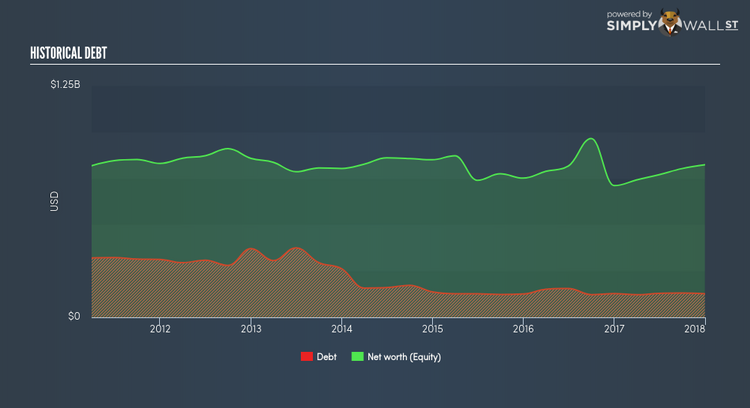Why The Bank of NT. Butterfield & Son Limited (NYSE:NTB) May Not Be As Risky Than You Think

Improving credit quality as a result of post-GFC recovery has led to a strong environment for growth in the banking sector. Economic growth impacts the stability of salaries and interest rate level which in turn affects borrowers’ demand for, and ability to repay, their loans. As a small-cap bank with a market capitalisation of US$2.47B, The Bank of NT. Butterfield & Son Limited’s (NYSE:NTB) profit and value are directly affected by economic activity. Risk associate with repayment is measured by the level of bad debt which is an expense written off Bank of N.T. Butterfield & Son’s bottom line. Today I will take you through some bad debt and liability measures to analyse the level of risky assets held by the bank. Looking through a risk-lens is a useful way to assess the attractiveness of Bank of N.T. Butterfield & Son’s a stock investment. See our latest analysis for Bank of N.T. Butterfield & Son
Does Bank of N.T. Butterfield & Son Understand Its Own Risks?
Bank of N.T. Butterfield & Son’s ability to forecast and provision for its bad loans relatively accurately indicates it has a good understanding of the level of risk it is taking on. If it writes off more than 100% of the bad debt it provisioned for, then it has inadequately estimated the factors that may have added to a higher bad loan level which begs the question – does Bank of N.T. Butterfield & Son understand its own risk? Bank of N.T. Butterfield & Son’s low bad loan to bad debt ratio of 73.57% means the bank has under-provisioned by -26.43%, indicating either an unexpected one-off occurence with defaults or poor bad debt provisioning.
How Much Risk Is Too Much?
Bank of N.T. Butterfield & Son is engaging in risking lending practices if it is over-exposed to bad debt. Typically, loans that are “bad” and cannot be recuperated by the bank should comprise less than 3% of its total loans. Bad debt is written off as expenses when loans are not repaid which directly impacts Bank of N.T. Butterfield & Son’s bottom line. Since bad loans make up a relatively small 1.26% of total assets, the bank exhibits strict bad debt management and faces low risk of default.
How Big Is Bank of N.T. Butterfield & Son’s Safety Net?

Bank of N.T. Butterfield & Son makes money by lending out its various forms of borrowings. Deposits from customers tend to bear the lowest risk given the relatively stable amount available and interest rate. The general rule is the higher level of deposits a bank holds, the less risky it is considered to be. Bank of N.T. Butterfield & Son’s total deposit level of 95.78% of its total liabilities is very high and is well-above the sensible level of 50% for financial institutions. This may mean the bank is too cautious with its level of its safer form of borrowing and has plenty of headroom to take on risker forms of liability.
Next Steps:
Bank of N.T. Butterfield & Son’s level of deposits is sensible relative to its liabilities. However, its mediocre management of bad debt could negatively impact its cash flows. Keep in mind that a stock investment requires research on more than just its operational side. There are three relevant factors you should further examine:
Future Outlook: What are well-informed industry analysts predicting for NTB’s future growth? Take a look at our free research report of analyst consensus for NTB’s outlook.
Valuation: What is NTB worth today? Has the future growth potential already been factored into the price? The intrinsic value infographic in our free research report helps visualize whether NTB is currently mispriced by the market.
Other High-Performing Stocks: Are there other stocks that provide better prospects with proven track records? Explore our free list of these great stocks here.
To help readers see pass the short term volatility of the financial market, we aim to bring you a long-term focused research analysis purely driven by fundamental data. Note that our analysis does not factor in the latest price sensitive company announcements.
The author is an independent contributor and at the time of publication had no position in the stocks mentioned.

